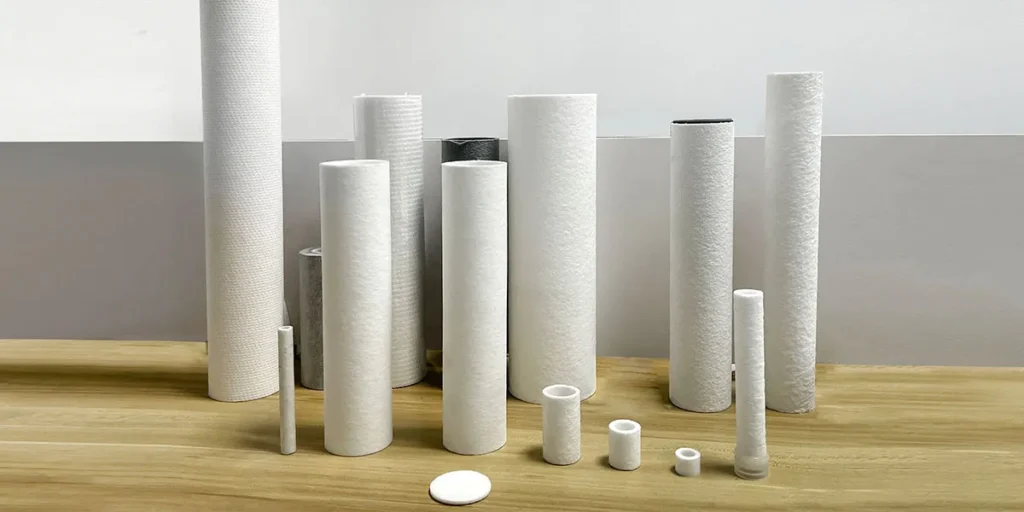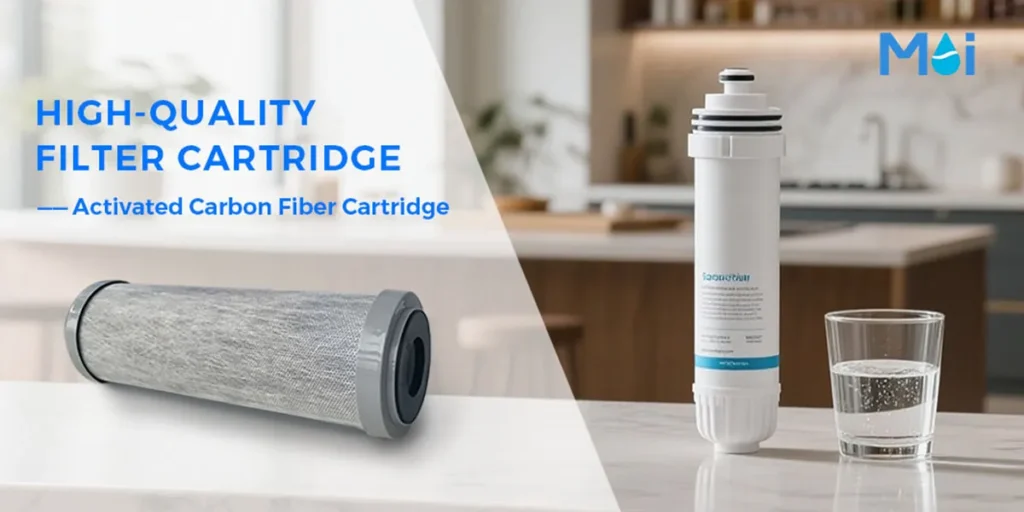Did you know? A single PP filter cartridge can intercept around 8 million impurities over its lifetime.
You may have never paid much attention to the PP filter cartridge, but it is the “invisible hero” in water purifiers, factory pipelines, and even pharmaceutical workshops. The PP filter cartridge (polypropylene melt-blown filter cartridge) may seem simple, but its design hides the meticulous calculations of engineers and the bionic wisdom of nature. When a drop of water passes through a PP filter cartridge, it undergoes a carefully designed “survival challenge”—the impurities in the water flow act like fugitives entering a maze, while the fine fibers inside the filter cartridge are the guards setting up a network to trap them.
1. The Pore Structure of PP Filter Cartridge: Not a “Sieve,” But a “3D Trap”
Common Misunderstanding:
Many people mistakenly think of PP melt-blown filter cartridges as flat screens, but in reality, their fiber structure is more like a combination of sponge and bird nest:
2. The Manufacturing Process of PP Filter Cartridge: Melt-Blown, Not “Weaving”
Traditional textiles involve the orderly interweaving of warp and weft threads, while the production of PP filter cartridges is more like a “fiber storm”:
3. The Deep Filtration Mechanism of PP Filters
While regular filter materials become clogged and discarded, the deep filtration mechanism of PP melt-blown filter cartridges allows them to work in three stages:
| Stage | Filtration Mode | Hidden Skill |
|---|---|---|
| Early | Surface Screening | Quickly removes large particles to protect downstream equipment |
| Mid | Deep Adsorption | Fibers’ static charge adsorbs colloids, improving efficiency by 15% |
| Late | Bridge Effect | Particles stack on each other, forming a finer “artificial filter mesh” |
Is there an unseen “impurity assassin” hiding in your pipes? Click here, and let Damai filter customize an interception plan for you!

4. Diverse Applications of PP Melt-Blown Filters
You might think PP filters only deal with water, but check out these lesser-known uses:
5. Common Misunderstandings Among Users
Misunderstanding 1: “Washing can revive the filter.”
Truth: Reverse washing tears the fiber joints, like pulling apart a wool felt, making it impossible to restore the pore structure.
Misunderstanding 2: “If the color deepens, it’s time to replace”
Professional Advice: A study from a water purification lab found that yellowing filters actually increase the absorption of heavy metals. What should be monitored is the flow rate—if it decreases by 30%, it’s time to replace the filter.
Misunderstanding 3: “The finer the filter, the better.”
Contextual Choice: For RO membranes, use a 5-micron filter before the membrane. Using a 1-micron filter may cause premature clogging, starving the RO membrane (leading to a 40% decrease in efficiency).
Conclusion: The Science of Filtration, at Its Core, is a Battle of Energy
With millimeter-thick layers, the PP filter cartridge performs precise “micro-particle hunting” in the split-second interaction with water flow. From kitchens to semiconductor factories, it tames the chaotic flow of impurities into a clean, orderly stream through progressively intricate fiber mazes. Perhaps this is the romance of technology—solving the most complex pollution problems with the simplest physical structure.

